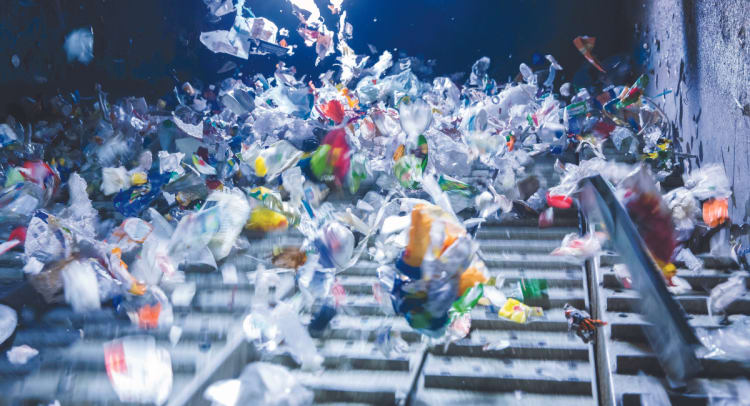State-of-the-art sorting technology
To take one current example, packaging containing polyethylene usually all ends up in the same fraction in the sorting plant, regardless of whether it is food, cosmetic, detergent, monolayer, multilayer or another packaging class. German company Polysecure has developed Sort4Circle, a new sorting technology that separates these fractions in line with relevant specifications. In early 2023, a first demo system was publicly exhibited. This followed on from a joint research project by Polysecure, Pforzheim University, the Fraunhofer Institute for Casting, Composite and Processing Technology (IGCV), the Karlsruhe Institute of Technology and HD Vision Systems. During the sorting process, which is now ready for roll-out, the objects are all separated before being detected and sorted in a single step. As a result, sorting remains flexible, scalable and commercially viable even when numerous different fractions are involved. The detection process is carried out using a new combined detector, which Polysecure developed together with Carl Zeiss AG. This simultaneously identifies each object’s NIR, image (AI), tracer and colour, and can optionally also detect digital watermarks. This means it can work with all current detection technologies as well as potentially those developed in the future. This is the first time that a cross-technology sorting process has been created, the company reports.
Correctly directing the various materials in the sorting system is key to obtaining high-quality recycled material.
Making film from seaweed
A host of research projects are exploring possible applications for renewable raw materials. This includes German company Brabender, which together with Dresden University of Technology is using marine algae to produce biodegradable film that simply dissolves after use.“At this year’s interpack, we exhibited the conversion process from seaweed to finished packaging. Seaweed can be used, for example, to create film for packaging laundry capsules or dishwasher tablets.” - Ludwig Schmidtchen, head of the seaweed polymer project at Brabender.

Image: Unsplash/Benjamin L. Jones
As well as being water-soluble and suitable for injection moulding, the material can also be shaped as desired and is ideal for the production of sealable films. The Carraphane obtained from marine algae by Brabender is an example of the circular economy in action, helping to reduce the consumption of non-renewable raw materials and minimising environmental impact. It is produced from seaweed without waste and with minimal resource usage before being put through an extrusion process. The film produced in this manner contains all the nutrients that are also present in the initial plant. Since the films are water-soluble and consist of natural marine algae biomass, they biodegrade after a short time, with all the constituent components returning to nature. The seaweed material also has a significantly smaller environmental footprint than conventional plastics and bioplastics made from other renewable feedstocks.



